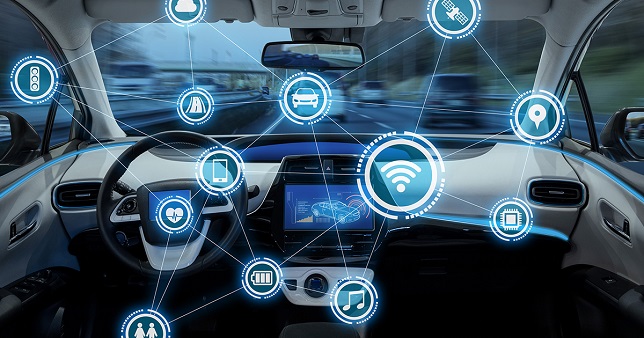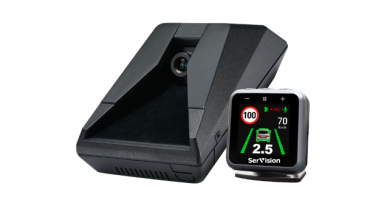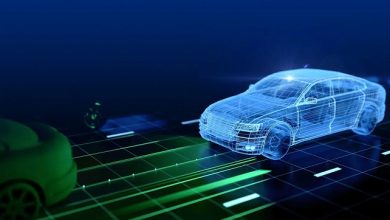ADAS with DAAS* – A Behavioral Shift towards future

32nd years of National Road Safety Week campaign, and question arises have we really improved as a society? How many more safety week/month campaigns would we need to achieve GOI’s target of zero death or achieving zero fatality in road accidents. India accounts for 11% of fatalities worldwide and data from 2019 shows that pedestrians, cyclists and two-wheelers are at the higher risk. Over 400 people are killed and over 1200 people get injuries on everyday basis in India and no wonder we would like to top in every domain. As per the Road Accident Report for 2019, 449K accidents took place leading to 151,113 deaths and 451,361 injuries across India. The numbers are definitely improved compared to 2018 reports in terms of 3.86% for the numbers of accidents while accident-related deaths have improved by 0.20% and injuries by 3.86%. The major reason reported is amendment in Motor Vehicle Act 1988 in 2019 as well as stiff hike in penalties for traffic violations as well as enforcement of law. Further analysis of data is shows 35.7% of deaths happened on national highways, 24.8% of deaths happened on state highways & 39% of deaths on other roads.
This gives indication that severity of accidents leading to death has nothing to do much with highway or city driving, it’s almost contributing to the same level. This also raises a question that with law enforcement on city roads by installing surveillance cameras can solve problems at some extent, will it lead to long-term solution of road safety concerns of the nation or world. Globally the stats are very similar and severe as in India. How do we make the societies safer, by increasing penalties, by amending laws, by technologies or by psychological shift in mindset of people while driving? One way is to remove human drivers and put robots to do the job but then we have employment concerns and robots have not yet learnt enough to survive. In terms of driving, we are living with two extremes, one way we have huge numbers of road accidents, deaths and using generation old vehicles and nearly zero adoption of technology to help and on the other hand the same technology has reached a stage in other part of globe where they are preparing, learning for driving and it’s doing the job at some level. There seems to be a large gap between these two extremes and we need a bridge to fill-in and help the transition. That bridge is nothing but the larger adoption of ADAS & implementation of ADAS with Telematics.
ADAS – Little Technical
ADAS aka Advanced Driver Assistance Systems. The first car with ADAS features was launched in 2000s in USA. The major component forming an ADAS are camera & radars. The ADAS according to SAE J3016 levels of automation is at Level 1 i.e., second level and Level 2 which defines partial automation. The Level 0/1/2 defines that even if the vehicle has all these features of braking the vehicle, accelerating the vehicle or adaptive cruise control, human drivers are must and from Level 3 to 5, human drivers are supposed to drive only when technology asks you to do so.
In a very brief way, ADAS is something which helps you to drive using technology like camera, radar and sometimes it relieves you from the driving and takes a charge. What ADAS does is sense, process, connect, map & drive. The sense part is done with proximity sensors, cameras in quantity of 1 to 8 depending on the level of complexity and use case, radars in quantity from 1 to 4. The process part is taken care for small sensors by ECUs & for cameras and take real-time decision-making GPUs are utilized. The connectivity is expected to be from 2G to 4G & will turn to 5G in near future which is expected to change the autonomy infrastructure. The mapping is handled by APIs & it is also depending on the complexity level and feature requirements for specific use cases. The actuators are for driving the vehicles and applying brakes when necessary. To have successful implementation of ADAS we also need to have cloud infrastructure for data processing and analysis.
ADAS adoption is the key
The world is heading towards complete autonomy and as described earlier, ADAS is a one of the key elements of the incremental autonomy. What do you think will be the trigger point towards transition to autonomy? This is very interesting part of the market adoption is very uncertain and in the times of data and communication the success of anything depends on how well it is being received by the audience. If we compare the stats, COVID-19 killed 150K people in the country in a year’s time since March 2020. Road accidents reports share the same numbers. COVID has accelerated technological adoption in different categories of industry by 10 years but the same is not happening for the case of ADAS.
Ideally, all things are related. OEMs are going the ADAS way to improve the road safety, government is trying to enforce laws to improve road safety, one has a barrier of cost of adoption and other has barrier of mindset for following the rules for the sack of society. Both of these barriers can be lowered down by trying for larger adoption of ADAS in all the vehicles. Currently, in India around 6% of the vehicles come with ADAS as built-in feature which is very less to trigger a change.
The technological advancements in the domains of telematics are heading towards the ADAS. In my previous month article named “Changing face of telematics …”, I had mentioned that how ADAS can gradually progressed to autonomy and how the software stack for autonomy can be used for building ADAS & telematics. In the case of ADAS the technology is ready, but deployment and adoption at larger level is missing. The root causes are cost and ROI against it. The most common person in world will always think of the ROI at first, when you ask someone that you install the device of x amount and it’ll help you save from accidents may be once or twice in a year. This is not going to help businesses to sell the product because selling safety is very difficult in cost conscious markets like India where the first question asked is how I’ll benefit from this and what do I get from this.
Psychological Shift
Adoption of ADAS depends on the behavioral aspect of it to the person who’s benefiting from it. It doesn’t make sense for burning billions of dollars if the adoption is very slow or the product is not showing any signs of ROI.
Introducing a new concept called as DAAS. DAAS also means “Data as a Service”. But here DAAS means “Driver Assistance & Analytics Service”.
The typical incremental phases of ADAS adoption to DAAS are as shown below.
The phases are assistance, response, analytics & incentivize. If with the ADAS products this cycle is completed successfully the adoption is surely to increase.
Assistance
One of the ADAS feature is assistance. The assistance means telling a driver what to do and what not and encouraging them to drive cautiously, safely and contributing to the safer ecosystem where everyone who’s driving safer is benefitting with their behavior. This can happen

with installation of retrofit ADAS in any vehicle. This will break the first barrier of cost of having ADAS equipped vehicle and now you can have ADAS which can fit into any vehicle which will be able to deliver L1 & L2 levels of autonomy. These kinds of ADAS systems comes with camera sensors and location sensors. The camera sensors are not only record the video but uses AI algorithms to identify safety critical scenarios of driving. For example, if the driver is driving in fatigue state, is he feeling drowsy, is he talking on the phone while driving, is he watching videos on navigation phone while driving. These are most common reasons for accidents these days and distraction has evolved as the biggest reason globally for collisions. To avoid that, an ideal ADAS system is supposed to be able to identify such scenarios and alert the driver for not get into any of the activities mentioned above. The idea here to tell drivers every time for such cases and coach them to improve by assisting. Next part comes here to respond to the assistance.
Response
Response to the provided assistance is one of the critical aspects towards adoption. The systems will only succeed if they will be able to gel with drivers while driving. Driving safe need not to be a law, it need not to be a compliance but it should be behavior. Forcing anyone to drive safe and penalizing them for not following it will just help them to pay for fines but it’s not going to be a long-term solution. In our ecosystem, either the law enforcer will withdraw or people in following traffic rules. There’s also an uncertainty that how many of the drivers really know what’s there in the traffic rules. The driving style of a person largely depends on their own experience of driving. The adoption of such coaching technology should be there from the first day a person starts to learn driving so that his/her driving style will be carved according to what the technology is suggesting and eventually will help the drivers to drive safer.
The ADAS systems with assistance have another issue is that majority of luxury car drivers turn it off and very less people allow the cruise control to drive vehicle. This happens when the psychologically the person has very less confidence on the technology as it is quite obvious that you’d definitely think twice before sitting beside someone you don’t know in driving. The same thing applies to the ADAS as well, if you have the level of interaction with the AI then it’ll definitely go further to the level when humans start listening to the AI installed and also follow from the next time and improve. These psychological changes take good amount of time because of behavioral aspect associated with it. The human-AI interaction is dependent on the response towards it. The ADAS systems will look for road side on the driver’s face and if everything seems under control it’ll continue monitoring, but in any case, if it seems where driver is not focusing or the next vehicle in front or someone is suddenly coming from the side, pedestrian crossing, etc. will trigger an alert for the driver to respond and save him from the accident. The active attention to the alerts generated from AI will have to be well received by drivers and they should also get enough response time to avoid such collisions. The next stage for this is analytics which is the key for increasing adoption.
Analytics
Since the GPS tracking is made mandatory, OBD-II is adopted well in by OEMs & consumers, analytics and driver profile is becoming standard. The driver profiling defines the behavior of a driver and this has to be done with context added. Many companies in the world have done variety of analytics on drivers from speed-based data and derived conclusions from that but there’re challenges associated with it as GPS based speed data is ambiguous and will not be precise in deriving analytics, still there are reports of companies who has done that successfully and are continuously doing it.
Every driver has a different way of handing situations and there’s no standard defining any one as right. For example, every driver will have different styles of braking the vehicle for the speed breaker. Some will come fast, apply short brake & jump the hurdle but will increase gradually. Now another way of doing it as, once you see the speed breaker, you slow down, jump it and then accelerate fast. Both the approaches are right and only speed-based data will not able to distinguish between the two and for that reason you’d need visual information. Visual information adds context to the data and helps analyze and deriving behavior. The analysis should normally involve the behavior of driver in all urban, highway & rural driving, day and night time, various geography, seasons etc. and most importantly their response to the assistance provided in the vehicle and how well they are interacting with it and improving. The improvements to make it on upwards trajectory it must be linked with incentivization.
Incentivize
Incentivization is the trigger point for adoption. The better drivers are analyzed, the better they’ll be incentivized and eventually this can lead to wider adoption of the technology as now it is rewarding for safety, following traffic rules and contributing to the safer driving ecosystem. Recently, the honorable high court gave a judgement that the insurance companies will have traffic violation premium which will be added while upgrading the insurance for both OD & TP. This is one way of improving behavior because now it is going to be costly in a long-term basis and it’ll not be just a one-time penalty. Now this should continue in different aspects as well where insurance companies analyze, generate driving reports, pass it on to the drivers and fleet companies managing them, fleet companies then associate with the ADAS companies for data driven coaching for personify it to a specific driver and encourage them to drive safer and better.
Leading the way – ADAS with DAAS
Hence the adoption of ADAS is the key challenge to solve instead of technological challenge. Making technology is always easier than adoption and that’s where lots of companies are trying hard to come up with the models which benefits the user and help the adoption.
ADAS being Advanced Driver Assistance Systems must be linked to DAAS i.e., Driver Assistance & Analytics Services which are offered by many ADAS & Telematics companies in India and globally to the logistics and fleet companies.
Think of the world, where your driving score counts for every license renewal, insurance renewal and you’re incentivized for tolls, car services and many other values adds just because you’re driving safe.
Safety is always rewarding one way or the other way, it will not only incentivize for insurance but every life saved is also a reward to earn.
Author:

Nisarg Pandya, Founder & CEO at drivebuddyAI, an emerging startup in Automotive Tech domain working on AI implementation for providing active assistance to the drivers through their camera-based device, majorly working with logistics & insurance players.
Nisarg is an entrepreneur and with a background of Electronics Engine & experience on working with IoT & AI based products. He started DrivebuddyAI 2018 and leading the way forward to mark the global presence in the domain of intelligent fleet & driver management systems.
He’s aiming to solve the autonomous tech. but he’s charting his own way towards it.
Published in Telematics Wire



